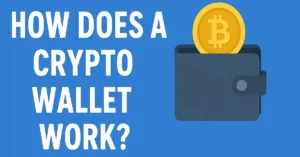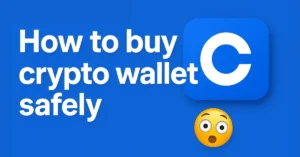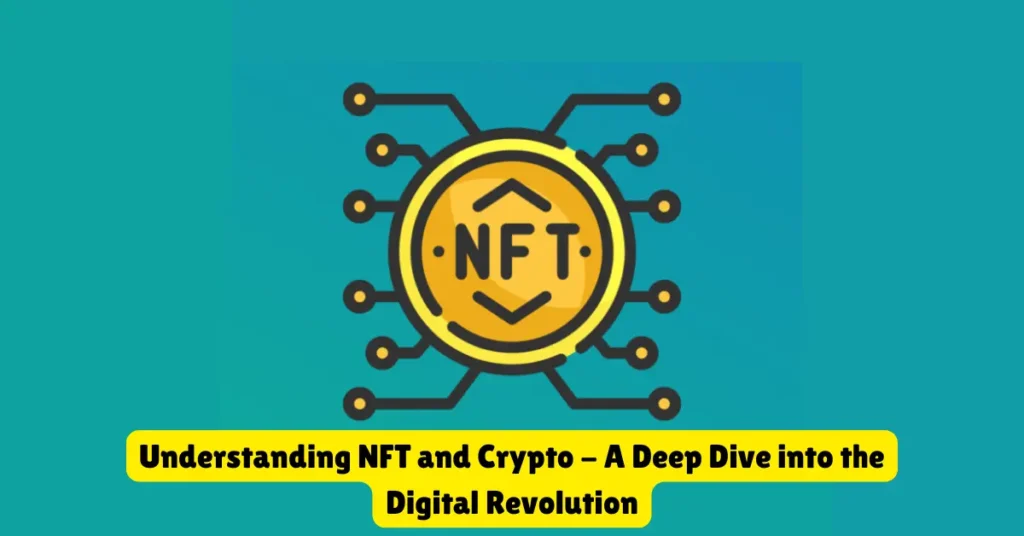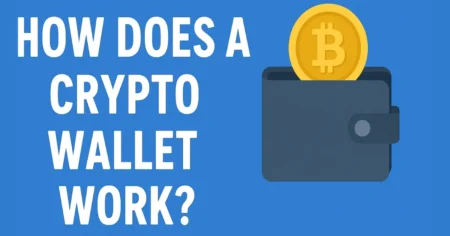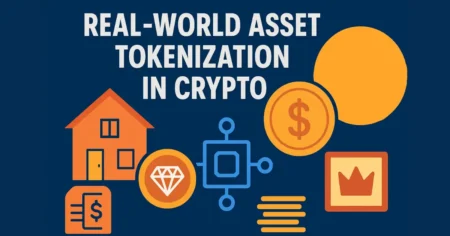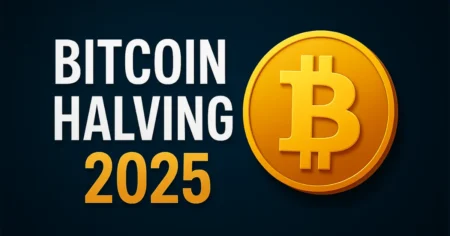NFT and crypto
Introduction to the Digital Economy
What Is the Digital Economy?
The digital economy isn’t just a buzzword anymore—it’s a full-blown transformation. At its core, the digital economy refers to an economy that operates primarily through digital technologies. Think about how most of your everyday tasks now revolve around digital platforms: online shopping, digital banking, even remote work. It’s all connected.
This economy isn’t driven by physical products anymore, but rather by data and digital services. And this shift is only getting stronger with the rise of Web3 technologies, such as blockchain, cryptocurrencies, and NFTs. These tools aren’t just reshaping how we spend and earn money—they’re changing the entire structure of industries.
The digital economy also brings in new possibilities for transparency, automation, and decentralization. Gone are the days when banks and big institutions were the only trusted authorities. Now, people are turning to decentralized platforms and smart contracts to handle their transactions. This is where blockchain steps in as the foundation for it all.
The Role of Blockchain Technology
If the digital economy were a building, blockchain would be its foundation. Blockchain is a decentralized digital ledger that records transactions across many computers. This makes it nearly impossible to alter records retroactively—an ideal solution for transparency and security.
Let’s break it down: each “block” contains data (like a record of a transaction), and these blocks are linked or “chained” together. Every time a new transaction happens, a new block is created and added to the chain. Because it’s decentralized, there’s no central point of failure or control, which makes it incredibly secure.
Blockchain is what powers both cryptocurrencies and NFTs. Without blockchain, the entire idea of trustless, peer-to-peer value exchange wouldn’t exist. It’s what gives crypto its power and what makes NFTs verifiable and one-of-a-kind.
What Are Cryptocurrencies?
Definition and Origins
Cryptocurrencies, or simply crypto, are digital or virtual currencies that use cryptography for security. The most well-known of these is Bitcoin, created in 2009 by an anonymous person (or group) known as Satoshi Nakamoto. Bitcoin was born out of the 2008 financial crisis—a rebellion against the traditional banking system.
The key feature of cryptocurrency is decentralization. Unlike regular money, which is controlled by central banks, cryptocurrencies are maintained by a network of computers (nodes) using blockchain. This makes transactions faster, cheaper, and more secure.
Over the years, thousands of cryptocurrencies have emerged—each with its own purpose. Ethereum, for instance, introduced smart contracts and became the backbone for NFTs. Others like Litecoin, Cardano, and Solana are also making their mark in different niches.
How Crypto Transactions Work
Crypto transactions might seem complex at first, but once you understand the basics, it’s quite straightforward. Imagine you want to send money to a friend. Instead of going through a bank, you use a crypto wallet to send tokens directly to their wallet address.
Here’s the typical process:
- You initiate a transaction via a crypto wallet.
- That transaction is broadcast to a network of computers (nodes).
- These nodes validate the transaction based on consensus mechanisms like Proof of Work or Proof of Stake.
- Once validated, the transaction is added to a new block on the blockchain.
- Your friend receives the tokens in their wallet.
All of this happens without a third party—no banks, no fees (well, minimal), and no delays.
Key Players in the Crypto Market
Several major players shape the crypto landscape:
- Bitcoin (BTC): The pioneer and most recognized cryptocurrency.
- Ethereum (ETH): Known for smart contracts and NFTs.
- Binance Coin (BNB): Powers the Binance exchange ecosystem.
- Ripple (XRP): Focused on fast, low-cost international payments.
- Solana (SOL) and Cardano (ADA): Compete with Ethereum in the smart contract space.
Then there are the platforms and exchanges like Coinbase, Binance, and Kraken that make buying, selling, and trading accessible to everyday users. There’s also a growing list of DeFi (Decentralized Finance) apps that let users lend, borrow, and earn interest without a bank.
Each of these players contributes to a rapidly evolving market that’s challenging the norms of finance and ownership.
NFTs Explained
What Is an NFT?
NFT stands for “Non-Fungible Token.” In simpler terms, it’s a one-of-a-kind digital asset that represents ownership of something—usually digital art, music, videos, or even virtual real estate. Unlike cryptocurrencies (which are fungible—1 BTC = 1 BTC), each NFT is unique.
Think of NFTs like trading cards or rare collectibles. You can own a limited-edition sports card or a one-of-a-kind digital artwork. And that ownership is recorded on the blockchain. It’s this record that makes NFTs valuable—because you can verify its authenticity and ownership history.
NFTs exploded in popularity when artists realized they could sell their work directly to buyers without middlemen. Suddenly, digital art wasn’t just “right-click and save”—it had real, provable ownership.
How NFTs Differ from Cryptocurrencies
At a glance, NFTs and cryptocurrencies might seem similar—they both exist on the blockchain, they’re both digital, and they can both be traded. But their purpose is entirely different.
- Cryptocurrencies: These are like digital cash. They’re interchangeable (1 ETH = 1 ETH) and primarily used for payments, investments, or staking in DeFi platforms.
- NFTs: These are digital proof of ownership for unique items. Each one has its own value based on rarity, creator, and demand.
Another key difference is how they’re used. NFTs are often tied to creative industries—art, music, entertainment—while cryptocurrencies are reshaping how we handle money, finance, and governance.
Real-World Examples of NFTs
NFTs have evolved far beyond pixelated art. Here are some fascinating real-world examples:
- Digital Art: Beeple’s “Everydays” sold for $69 million at Christie’s.
- Music Albums: Artists like Kings of Leon released albums as NFTs.
- Virtual Real Estate: Platforms like Decentraland and The Sandbox sell plots of digital land.
- Gaming Assets: In games like Axie Infinity, players buy, sell, and trade characters and items as NFTs.
- Tickets and Memberships: Some events now issue NFT-based access passes that can’t be forged or duplicated.
The possibilities are endless. From owning moments in sports history to buying virtual fashion, NFTs are becoming a new form of digital status and utility.
How Crypto and NFTs Work Together
Blockchain as a Shared Foundation
Crypto and NFTs may serve different purposes, but they’re built on the same core technology—blockchain. This decentralized system ensures that every transaction, whether it’s buying crypto or minting an NFT, is securely recorded and easily verifiable.
Let’s think of the blockchain as a digital highway. Cryptocurrencies are the vehicles zipping along, transferring value from one wallet to another. NFTs, meanwhile, are like high-value cargo—unique and irreplaceable. Both use the same road, but with different goals in mind.
The integration of both into the same ecosystem allows seamless transactions. For instance, Ethereum isn’t just a cryptocurrency—it’s also the network on which most NFTs are created and traded. Smart contracts, a major feature of Ethereum, automate and enforce agreements without human intervention. These are used in both crypto financial tools and NFT transactions.
Because of this shared foundation, it’s easier for platforms to support both crypto payments and NFT functionalities. This synergy is why we often see crypto and NFTs mentioned together—they’re two sides of the same digital coin.
Buying NFTs with Cryptocurrencies
One of the most common ways people interact with NFTs is by purchasing them using cryptocurrencies. Ethereum is the most widely used for NFT transactions, but others like Solana, Polygon, and Tezos are also growing in popularity due to lower fees and faster speeds.
Here’s how a typical NFT purchase goes:
- Set Up a Crypto Wallet: You need a wallet like MetaMask, Trust Wallet, or Coinbase Wallet. This is where your cryptocurrency and NFTs will live.
- Buy Cryptocurrency: Use a platform like Coinbase or Binance to purchase ETH, SOL, or whichever crypto the NFT marketplace accepts.
- Connect Wallet to Marketplace: Head to an NFT platform like OpenSea, Magic Eden, or Rarible and connect your wallet.
- Choose Your NFT: Browse, bid, or buy directly.
- Complete the Purchase: Confirm the transaction in your wallet. Once processed, the NFT is yours, recorded on the blockchain.
Transactions typically include a gas fee, which is the cost of processing the transaction on the blockchain. These can vary widely depending on network congestion.
What’s revolutionary here is the full autonomy and ownership. No banks, no intermediaries—just you and your digital asset.
Crypto Wallets and NFT Marketplaces
To engage with the NFT world, crypto wallets and marketplaces are essential tools. Let’s explore both:
Crypto Wallets:
- MetaMask: A browser extension and mobile wallet widely used for Ethereum-based NFTs.
- Trust Wallet: Mobile-only wallet supporting multiple blockchains.
- Coinbase Wallet: Great for beginners, integrates easily with Coinbase exchange.
These wallets not only store your crypto but also your NFTs. Think of them as your digital keychain—every token and collectible you own is accessible through them.
NFT Marketplaces:
- OpenSea: The largest and most popular marketplace, supporting Ethereum, Polygon, and more.
- Rarible: A decentralized platform where users can create and sell NFTs.
- Magic Eden: Leading NFT marketplace on the Solana blockchain.
- Foundation: Curated platform known for high-quality art pieces and limited access for creators.
Each marketplace supports specific blockchains and wallets. Before buying or selling, make sure your wallet and crypto are compatible with the platform you’re using.
Wallet security is also crucial. Always enable two-factor authentication and never share your seed phrase. Scams and phishing attacks are common in this space, and once your assets are gone, there’s no way to recover them.
The Evolution and Rise of NFTs
Early Days of Digital Art
NFTs didn’t appear overnight. The concept of digital ownership dates back to the early days of the internet, but without blockchain, it lacked security and legitimacy. Artists and creators would upload their work online, but there was no way to prove ownership or authenticity.
That all changed with the introduction of blockchain technology. In 2017, the Ethereum network gave rise to the first wave of NFTs, with projects like CryptoPunks and CryptoKitties grabbing headlines. CryptoKitties, a game where users breed and collect digital cats, became so popular it temporarily clogged the Ethereum network.
Though quirky, this phase proved that digital scarcity could be valuable—and more importantly, verifiable. It showed that people were willing to pay for unique digital items, as long as there was proof of ownership.
Artists finally had a tool that protected their work and allowed them to monetize it directly. No galleries, no labels—just creators and their audience.
NFT Boom of 2021
2021 was a landmark year for NFTs. Suddenly, they were everywhere—from Twitter profile pics to million-dollar auctions. The pandemic played a big role in this surge, as more people spent time online and began exploring digital investments.
Beeple’s $69 million sale at Christie’s brought mainstream attention. Musicians, influencers, athletes, and even corporations started minting and selling NFTs. NBA Top Shot allowed fans to own iconic basketball moments. Celebrities like Snoop Dogg and Grimes jumped into the space, drawing even more eyes.
What fueled the boom?
- Speculation: People saw NFTs as the next big investment.
- Community: NFT projects often build tight-knit online communities.
- Status: Owning rare NFTs became a digital flex.
- Utility: Some NFTs came with real-world perks like event access, merchandise, or voting rights.
It wasn’t just about art—it was about ownership, identity, and belonging in the digital age.
NFTs in Gaming, Music, and Real Estate
As NFTs matured, they started branching out beyond art:
- Gaming: NFTs have revolutionized gaming with “play-to-earn” models. In games like Axie Infinity or The Sandbox, players earn crypto and trade in-game assets as NFTs. Unlike traditional games, you actually own what you earn—characters, weapons, land, etc.
- Music: Artists are using NFTs to sell exclusive tracks, concert tickets, or fan experiences. It cuts out the middlemen and gives more earnings directly to creators. Platforms like Audius and Sound.xyz are leading this movement.
- Real Estate: Believe it or not, NFTs are making their way into the property world—both physical and virtual. In the metaverse, platforms like Decentraland and The Sandbox allow users to buy plots of land as NFTs. In the real world, companies are experimenting with using NFTs to represent ownership or deeds for property.
The expansion of NFTs into various industries proves their versatility. They’re not just collectibles—they’re tools for ownership, utility, and innovation.
The Benefits of NFTs and Cryptocurrencies
Ownership and Authenticity
One of the biggest breakthroughs of NFTs and cryptocurrencies is verifiable ownership. Before blockchain, proving ownership of a digital asset was practically impossible. You could own a piece of digital art, but anyone could screenshot or download it. The difference now? The blockchain provides a permanent, public record that says you own the original.
NFTs carry metadata that includes the creator’s name, the history of ownership, and other relevant information. This ensures that what you own is original and can be verified by anyone at any time. That’s a game-changer for creators who have long struggled with piracy, fraud, and lack of recognition.
Similarly, cryptocurrencies give you complete control over your funds. There’s no need to trust a third party like a bank. You own the private keys, you own the assets. It’s the very definition of “financial sovereignty.“
Decentralization and Security
One of the key reasons blockchain, crypto, and NFTs have gained such traction is their decentralized nature. What does that mean? No single authority controls the system. It’s distributed across a network of computers (called nodes), and all participants have equal access.
This decentralization leads to several benefits:
- Security: It’s nearly impossible to hack a blockchain due to its consensus mechanisms.
- Transparency: All transactions are publicly visible and traceable.
- Reliability: The network doesn’t go down if one server fails.
Whether you’re holding Bitcoin or minting an NFT, you benefit from a level of security that traditional systems can’t always guarantee. Smart contracts—self-executing codes stored on the blockchain—add another layer of trust and automation.
Accessibility and Financial Inclusion
Perhaps the most underrated benefit of crypto and NFTs is their ability to include the unbanked. Over 1.7 billion people around the world don’t have access to traditional banking services. But with a smartphone and internet connection, anyone can set up a crypto wallet and start transacting.
NFTs also allow creators from all over the world—especially in underserved regions—to showcase and sell their work globally. No need for a gallery, agency, or middleman. It’s a level playing field powered by code and community.
Cryptocurrencies like Bitcoin and Ethereum have created new financial opportunities. You can earn, save, lend, borrow, and invest—all without a traditional bank account.
Risks and Challenges in the NFT and Crypto Space
Market Volatility
Crypto and NFT markets are notorious for their wild price swings. One day, your NFT might be worth thousands; the next, it could plummet in value. The same goes for cryptocurrencies—Bitcoin and Ethereum can rise or fall by 10-20% in a single day.
This volatility is driven by:
- Speculation: Many buyers are in it for quick profits.
- Lack of regulation: Markets react strongly to news and government actions.
- Sentiment-driven trading: Hype, FUD (fear, uncertainty, doubt), and social media influence prices.
If you’re investing in crypto or NFTs, it’s essential to understand that risk. You should only invest what you’re willing to lose and focus on long-term utility rather than short-term gains.
Regulatory Concerns
Governments around the world are scrambling to figure out how to regulate cryptocurrencies and NFTs. Some, like El Salvador, embrace Bitcoin as legal tender. Others, like China, have outright banned crypto mining and trading.
For NFTs, questions around intellectual property, taxes, and consumer rights remain murky. Who owns the rights to an image associated with an NFT? What happens if a platform hosting your NFT shuts down?
Regulations could help legitimize the space, protect users, and weed out scams—but they also pose a risk of stifling innovation. For now, anyone entering the space should stay informed and compliant with local laws.
Scams and Fraud in the NFT/Crypto World
Where there’s money, there are scams—and the NFT/crypto space is no exception. Phishing attacks, rug pulls, fake NFT drops, and impersonator accounts are common.
Common scams include:
- Phishing: Fake emails or websites tricking you into revealing your wallet’s private keys.
- Rug pulls: NFT or crypto projects that vanish after collecting funds.
- Pump-and-dump schemes: Influencers artificially inflate prices, then sell off assets, leaving others with losses.
To stay safe:
- Never share your private keys or seed phrases.
- Double-check URLs and use verified marketplaces.
- Research projects thoroughly before investing.
- Use cold wallets (offline storage) for high-value assets.
Staying informed is your best defense in this high-risk, high-reward space.
NFTs and Crypto in the Future
Web3 and the Decentralized Future
Web3 is the next evolution of the internet—one that is decentralized, user-owned, and blockchain-powered. Unlike Web2, where tech giants control most data and platforms, Web3 gives control back to the users.
In Web3, your data, identity, and digital assets are tied to your crypto wallet. You own them, not a corporation. You participate in decentralized autonomous organizations (DAOs), earn tokens for your contributions, and have a say in the platforms you use.
NFTs and cryptocurrencies are at the heart of this revolution. They allow digital ownership, fair monetization, and trustless interactions. Whether it’s gaming, content creation, or finance—Web3 is flipping the script.
Real-World Integration of NFTs and Crypto
We’re already seeing real-world applications of NFTs and crypto beyond digital speculation:
- Retail Payments: Companies like Tesla, PayPal, and Shopify accept crypto.
- Event Ticketing: NFTs are replacing paper tickets with digital, non-duplicable ones.
- Luxury Goods: Brands like Gucci and Nike issue NFTs with their products for authentication.
- Healthcare and ID Verification: Blockchain is being explored for secure health records and digital identity.
The blend of digital and real-world use cases is only getting stronger. And as these technologies mature, they will quietly integrate into everyday life.
Predictions and Opportunities
Looking ahead, several trends are emerging:
- Interoperability: Blockchains that can talk to each other will dominate.
- Layer 2 Solutions: These make Ethereum-based NFTs faster and cheaper.
- Utility-Based NFTs: More focus on NFTs with real-world value, like memberships, access, and royalties.
- Institutional Adoption: Banks and corporations are exploring blockchain to streamline operations.
For investors and creators, the future holds immense opportunity—but also the need for caution, research, and adaptability.
Conclusion
The worlds of NFTs and cryptocurrencies are more than just digital buzzwords—they represent a seismic shift in how we think about money, art, ownership, and the internet itself. From the grassroots rise of crypto to the explosive popularity of NFTs, we’re witnessing a democratization of finance and creativity like never before.
If you’re curious, don’t be afraid to dip your toes in. Learn. Explore. Try small investments. And above all, stay informed. Whether you’re an artist, gamer, investor, or tech enthusiast, there’s space for you in this new digital frontier.
FAQs
Are NFTs just a trend, or will they last long-term?
NFTs are evolving beyond art and hype into areas like gaming, real estate, and music. Their use cases are expanding, suggesting long-term utility.
Can I create and sell my own NFT?
Yes, platforms like OpenSea and Rarible allow anyone to mint and list NFTs. All you need is a digital wallet and some crypto to cover gas fees.
Is it safe to invest in cryptocurrency and NFTs?
While there’s opportunity, there’s also risk. Always do your research, use secure wallets, and never invest more than you can afford to lose.
What’s the difference between Bitcoin and Ethereum?
Bitcoin is primarily a store of value, while Ethereum is a programmable blockchain used for smart contracts and NFTs.
Will governments ban crypto and NFTs?
Some countries have imposed restrictions, but many are moving toward regulation rather than outright bans. The global trend leans toward integration and oversight.
Also, read
- What is a Crypto Wallet and How Does It Work? – Coinsify
- 10 Crypto Terms Every Beginner Must Know – Coinsify
- What is Blockchain Technology – Complete Guide – Coinsify
- How to Buy Crypto Safely in 2025 – Complete Guide – Coinsify
- Bitcoin vs Ethereum: Key Differences Explained – Complete Guide
- Ultimate Blockchain Glossary: Learn Blockchain Terms Easily
- How to Buy Bitcoin Safely (Complete Beginner’s Guide)
- Top 10 Crypto Wallets for Beginners (2025 Edition)
- What is Cryptocurrency? A Beginner-Friendly Guide (2025)
